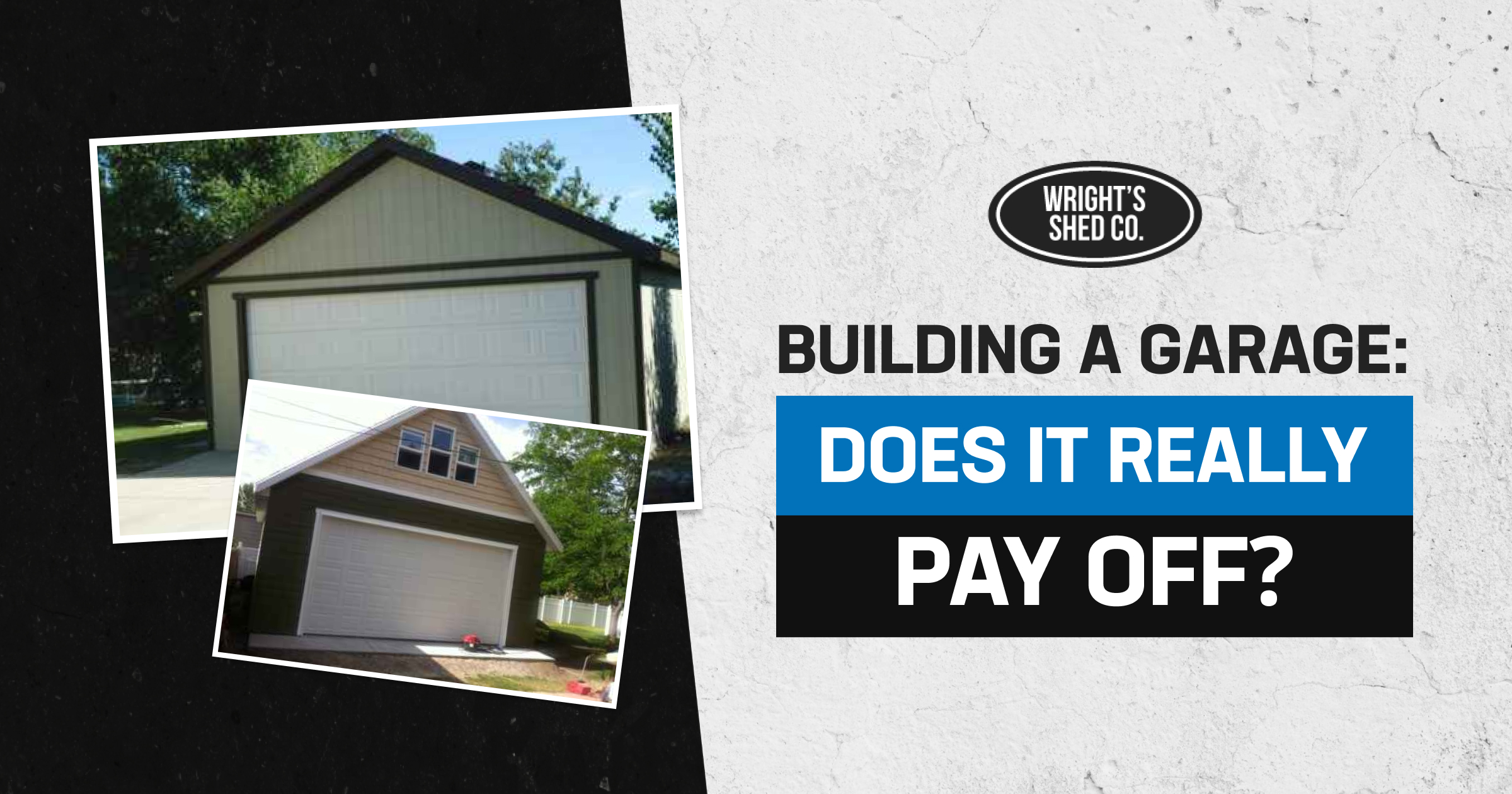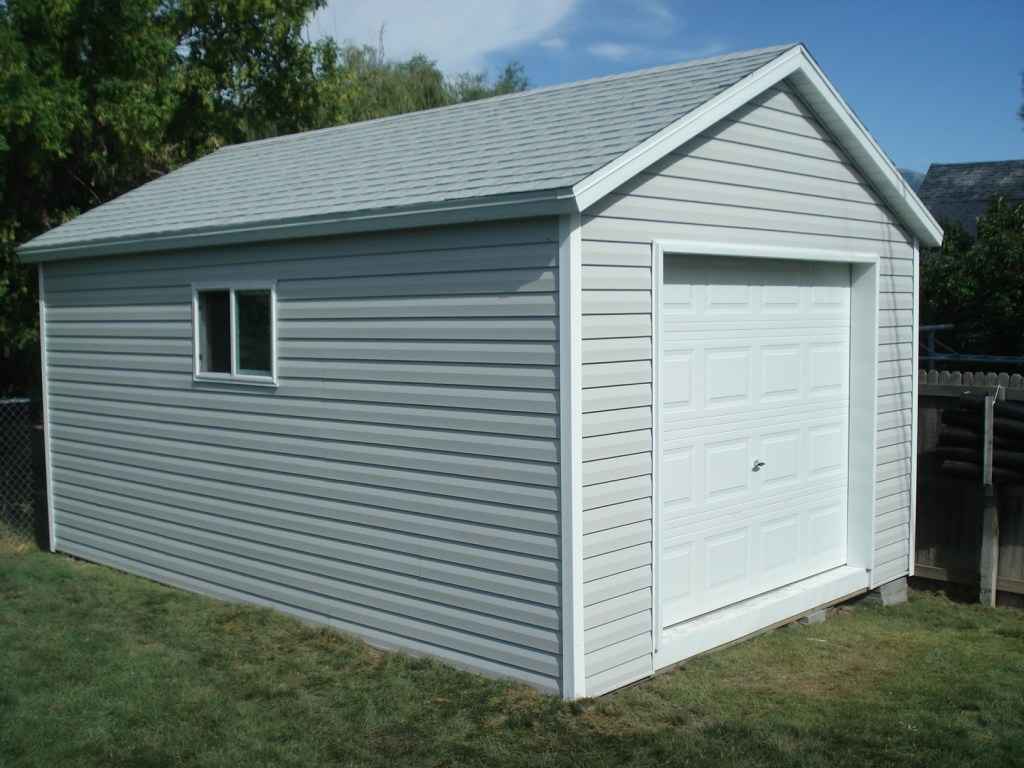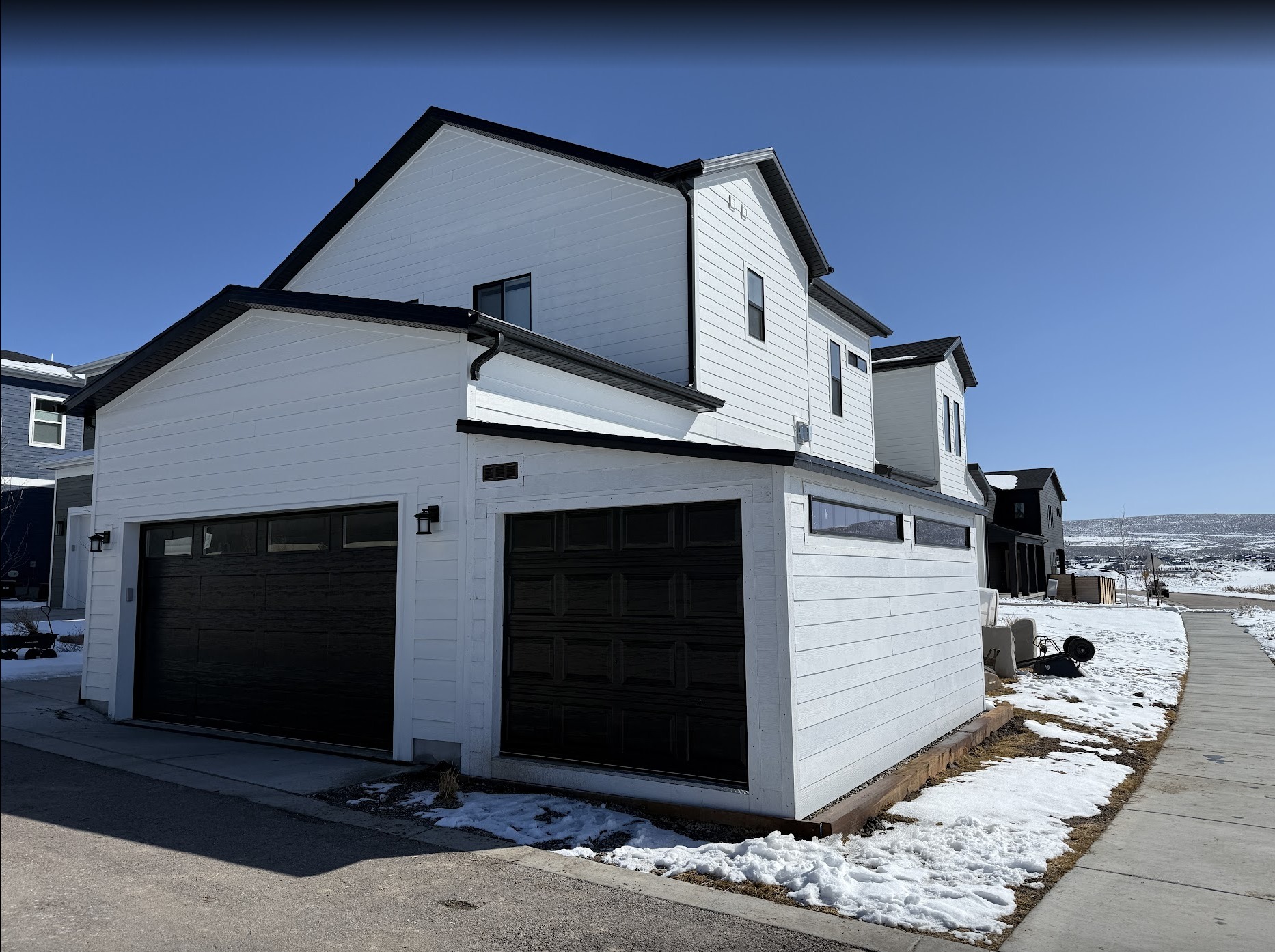Why Building a Garage Transforms Your Property
Building a garage is a valuable home improvement project that protects your vehicles, adds storage, and boosts your property’s value. It can also serve as a workshop or hobby space. Here’s a quick look at the construction process:
Essential Steps for Building a Garage:
- Planning and Design: Determine size, placement, and features.
- Permits and Approvals: Secure building permits and meet local codes.
- Foundation Preparation: Arrange for the site preparation and concrete foundation.
- Framing: Construct walls, roof trusses, and structural elements.
- Exterior Finishing: Install siding, roofing, windows, and doors.
- Final Details: Add electrical, insulation, and interior finishes.
Once permits are approved, plan on an overall project timeline of about 4–6 weeks, with on-site construction typically 2–3 days. The key to success lies in proper planning, quality materials, and experienced construction.
From our experience at Wright’s Shed Co., we’ve seen how building a garage onsite with premium materials creates structures that last for decades. Since 1997, we’ve specialized in custom, on-site detached garages construction across Utah, Idaho, Iowa, and Nebraska, building every structure from the ground up on your property.

Why Building a Garage is a Game-Changer for Your Home
The decision to building a garage is about more than just parking, it’s an investment in your property and lifestyle. From our years of experience, we’ve seen how a well-built, on-site garage can transform a home, offering both financial returns and practical benefits.
The Tangible Returns of Building a Garage
One of the most compelling reasons to add a garage is its impact on your property’s value. It’s a sought-after feature that can substantially increase your home’s appeal and market price.
- Increased Property Value: A new garage is a wise investment. A single garage can boost your property’s value by 5–10%, while a double garage can increase it by up to 20%, making it an excellent return on investment (ROI).
- Improved Curb Appeal: A well-designed garage that complements your home’s architecture significantly improves its overall aesthetic and attractiveness to potential buyers.
- Protection from Elements: Parking inside a garage protects vehicles from harsh weather like sun, rain, and snow. This can prolong your car’s lifespan and help maintain its resale value.
- Improved Security: A garage offers a secure, locked space for your vehicles and other valuables, deterring theft and vandalism.
For more insights into how home improvements impact value, you can consult reports like the 2024 Cost vs. Value Report. We believe in providing structures that not only meet your immediate needs but also serve as a lasting asset. Learn more about our Detached Garage services.
More Than Just Parking: Opening Up Your Garage’s Potential
While vehicle protection is a primary function, a garage offers a wealth of opportunities to expand your home’s usable space. We’ve seen our custom-built garages become true extensions of our clients’ lifestyles.
- Extra Storage Space: Garages are ideal for storing tools, lawn equipment, seasonal items, and sports gear. With smart planning, you can maximize every square foot. Check out our Detached Garage Organization Tips for ideas.
- Workshop or Hobby Area: For the DIY enthusiast, a garage can be transformed into a dedicated workspace for woodworking, car repairs, painting, or any other passion.
- Home Gym Space: Create a convenient workout area at home. A garage provides the perfect private environment for exercise equipment, keeping your main living areas clutter-free.
- Man Cave or She-Shed: A garage can be finished to become a comfortable personal retreat—a place to relax, entertain, or pursue interests away from the main house.
At Wright’s Shed Co., we pride ourselves on creating versatile spaces. Explore our Custom Built Garage options to see how we can bring your vision to life.
The Crucial First Step: Planning and Permitting for Building a Garage
As Colonel John “Hannibal” Smith said, “I love it when a plan comes together!”, and that’s especially true when building a garage. We’ve learned over our decades in business that proper planning separates successful projects from costly headaches. It’s the foundation for ensuring your finished garage meets your needs and complies with local regulations.
Why Choose a Detached Garage Built Onsite?
When researching garage options, you’ll find several routes. From our experience serving customers across Utah, Idaho, Iowa, and Nebraska since 1997, a detached garage built onsite stands head and shoulders above alternatives.
- Cost: While prefabricated kits may seem cheaper upfront, they often lack durability. Onsite-built garages require a higher initial investment but deliver superior long-term value through better materials and craftsmanship.
- Flexibility: Onsite construction shines with flexibility. Unlike prefab kits with limited designs, we can create custom dimensions and unique layouts. Attached garages are constrained by your home’s structure, while carports offer minimal protection.
- Construction Quality: When we build onsite, every component is crafted by skilled professionals using premium materials. We create a structure from the ground up, ensuring a level of quality that can’t be matched by assembling pre-made parts.
- Value: A professionally built detached garage significantly boosts property value and curb appeal, whereas prefab options can look like temporary solutions rather than permanent improvements.
This is exactly Why a Detached Garage Is Your Best Option for homeowners who want a structure that will serve them for decades.
Designing Your Dream Garage: Size, Layout, and Features
This is where your practical needs become a concrete plan. The best results come from thinking beyond just a place to park.
Size planning starts with your vehicles. A one-car garage typically starts around 12×16 ft, while a two-car garage is usually 20×20 ft or larger (many homeowners choose 20×24 or 24×24 for modern vehicles and storage).
Do you drive a large truck? Will you need extra clearance? Think about future vehicle purchases and how you’ll use the space for storage or a workbench.
Custom layouts and features make your garage uniquely yours. Consider the number of windows for natural light, convenient entry door placement, and special features like extra-tall doors for RVs or a covered patio area.
We love helping customers explore creative possibilities. Our Detached Garage Ideas showcase some of the innovative solutions we’ve created.
Navigating Permits and Codes for Building a Garage
This step can be tricky, but it doesn’t have to be complicated. Having guided countless customers through this process, we can help you understand what’s required.
- Building Permits: These are mandatory and ensure your project meets safety standards and zoning laws. Skipping this step can lead to fines, forced demolition, or problems when you sell your home.
- Zoning and Setbacks: These laws dictate where you can place your garage, specifying minimum distances from property lines and other structures. These rules vary dramatically between cities and even neighborhoods.
- Fire Code: These considerations are important when your garage is close to property lines. You may need non-combustible exterior cladding or fire-rated interior walls, depending on the distance.
- Height and Footprint: Most municipalities have maximum height limits and rules on how much of your lot can be covered by structures. Exceeding these may require special variances.
From our experience in Utah, Idaho, Iowa, and Nebraska, codes can vary widely. We work with each customer to ensure their plans meet all local requirements before construction begins.
The Step-by-Step Process of Building a Garage
Once your plans are approved and permits are in hand, the excitement begins. At Wright’s Shed Co., we believe in building a garage onsite. Unlike prefabricated structures, every piece of your garage is crafted on your property by skilled builders.
Laying the Groundwork: Foundation Essentials
A solid foundation is critical for a structure that will last for decades. For most detached garages, a slab-on-grade concrete foundation is the most practical choice, serving as both the foundation and the floor.
Proper site preparation is key. The area must be cleared, leveled, and graded to ensure proper water drainage. Depending on local codes and soil, footings may be required below the frost line to prevent shifting, which is especially important in Utah, Idaho, Iowa, and Nebraska.
During the pour, anchor bolts must be set in the wet concrete to secure the garage’s frame to the foundation. While we don’t pour foundations, we provide expert guidance and connect you with trusted local professionals for this critical first step.
Raising the Structure: Framing, Sheathing, and Roofing
This is where your garage takes shape. Our onsite construction approach ensures every detail receives the attention it deserves.
- Wall Framing: We build our walls with durable 2×4 or 2×6 studs to create a strong and stable framework for every structure.
- Exterior Sheathing: OSB or plywood is used to create a rigid shell that braces the walls and provides a solid backing for your exterior finish.
- Roof Installation: Pre-engineered trusses sized to your loads, roof sheathing, and weatherproofing with metal drip edge and roofing felt underlayment
- Exterior Cladding: We regularly use LP SmartSide® engineered wood siding (backed by a 5/50-year factory warranty) and GAF Architectural Shingles (limited lifetime factory warranty), with vinyl, metal, and other options available.
The Final Touches: Doors, Windows, and Finishes
With the shell complete, we focus on the details that make the space functional and attractive.
- Windows and Doors: We carefully install and seal windows for natural light and walk-through doors for convenience, ensuring they are level and weather-resistant.
- Garage Door: Proper installation of your sectional garage door is crucial for smooth, secure, and safe operation. We always recommend professional installation.
- Electrical and Plumbing: Planning for lighting, outlets, and a garage door opener is always worthwhile. If you’re dreaming of a workshop, extra circuits and strategically placed outlets make all the difference.
- Insulation: If you plan to heat or cool the space, insulation in the walls and ceiling will improve comfort and utility. It also helps with sound dampening.
- Interior Finishes: Options range from exposed framing for a workshop feel to installing drywall for a clean look. Plywood offers a durable middle ground.
These finishing touches separate a basic shelter from a space you’ll enjoy. If you’re excited about a dedicated workspace, check out our guide on how to Turn Your Garage Into a Workshop.
Decoding the Cost of Building a Garage
Understanding the financial side of building a garage is essential. From our decades of experience at Wright’s Shed Co., we know costs vary based on size, materials, finishes, and regional differences across Utah, Idaho, Iowa, and Nebraska.
Cost Breakdown: Single vs. Double Garages
Size is a major factor, but not the only one. Expect a broad range based on size, finish and region: most detached garages land around $40–$70 per sq ft, with a typical two-car totaling \~$26,400 and overall projects ranging from \~$4,800 to $14,000+ depending on specs. A basic structure will be at the lower end, while a fully customized garage with premium features moves toward the higher end.
Regional labor rates and material costs also play a significant role. For a deeper dive, check out our guide on How Much to Build a Detached Garage.
The Hidden Expenses: Permits, Plans, and Site Prep
Many homeowners are surprised by the “extras” that aren’t immediately obvious. We walk clients through these upfront to avoid budget surprises.
- Building Permit Fees: Typically $200–$1,500 depending on location and size.
- Utility connections: Plan for \~$1,000–$5,000 (e.g., electrical $1,000–$2,500; plumbing $600–$1,600 per fixture).
- Foundation: Often $4–$10 per sq ft depending on soil and design. (Exact plan/demolition fees vary by city and scope.)
Budget-Friendly Solutions for Building a Garage
We understand every family has a budget and we excel at delivering value. Our custom approach means we can tailor materials and features to fit your needs. You might start with a solid, basic structure and add premium features later.
While the DIY route is tempting, building a garage is complex. We’ve seen DIY projects cost more in the long run due to mistakes, safety issues, or code violations. A better way to get involved is to handle finishing touches like interior painting or shelving after we complete the professional construction.
Our focus is on long-term value. Our onsite construction and premium materials create garages that last for decades, backed by warranties. When you invest in quality, you’re adding a lasting asset to your property. Visit our Garage Pricing page to explore options that fit your vision and budget.
Frequently Asked Questions about Building a Garage
Over our decades in the business, we’ve heard just about every question you can imagine about building a garage. Here are the most common ones.
What are the most common mistakes to avoid when building a garage?
These mistakes are common but completely avoidable with proper planning.
- Poor Planning: Rushing the design phase without thinking through long-term needs.
- Ignoring Building Codes: Failing to secure permits or follow local rules can lead to project shutdowns and fines.
- Skimping on the Foundation: Cutting corners here leads to structural problems that are expensive to fix later.
- Choosing the Wrong Size: Build for your future needs, not just your current car.
- Underestimating Costs: Forgetting to budget for permits, plans, site prep, and utilities.
- Hiring the Wrong Builder: The cheapest quote isn’t always the best value. Look for quality and experience.
What are the essential maintenance tips for a new garage?
A little regular care will keep your new garage in great shape for decades.
- Service the Garage Door: Annually inspect and lubricate the door’s moving parts.
- Wash the Exterior: Periodically wash the siding to remove dirt and grime.
- Clean the Floor: Sweep regularly and consider a sealant or epoxy coating to protect the concrete from stains.
- Check for Leaks: Seasonally inspect seals around windows, doors, and the roof.
- Ensure Proper Drainage: Keep gutters clean and downspouts directed away from the foundation.
What are the best exterior cladding options for a garage?
The best option depends on your budget, style, and desired maintenance level.
- LP SmartSide (recommended): Engineered wood with strong impact resistance and long warranties; great curb appeal with paintable finish.
- Vinyl siding: Cost-effective, low maintenance, wide color choices; good for budget-friendly builds.
- Fiber-cement: Highly durable and fire-resistant; lower maintenance but typically higher upfront cost.
- Wood/T1-11: Classic, warm look; needs regular painting or staining and upkeep.
- Metal siding: Very durable and modern; can dent and requires proper coatings to prevent corrosion.
Can I use my new garage for more than just parking?
Absolutely! Most of our customers use their garages as workshops, home gyms, hobby spaces, or for extra storage. Planning for this versatility from the start is key to maximizing your space. For ideas, see our Detached Garage Organization Tips.
Does Wright’s Shed Co. build the foundation for my garage?
No. We specialize in the on-site garage structure. We’ll advise on typical foundation requirements, but foundation work and permits are outside our build scope.
Building a Garage with Wright’s Shed Co.: Your Local Experts
Building a garage is a rewarding project that adds significant value and utility to your home. From planning and permitting to the final touches, it’s a substantial undertaking that requires expertise, precision, and a commitment to quality. For a structure that will last for generations, partnering with an experienced, local builder is essential.
Since 1997, Wright’s Shed Co. has been the trusted Garage Builders across Utah, Idaho, Iowa, and Nebraska. What sets us apart is that we build every structure onsite. No prefabricated components, just skilled craftsmen creating your custom garage from the ground up with premium materials.
Our onsite approach provides the flexibility to create a garage that is perfectly customized to your vision and property. We stand behind our work with industry-leading warranties. This commitment ensures your garage is a lasting asset built to endure.
Whatever your vision, a traditional two-car garage, a workshop, or extra storage, our local experts are here to bring it to life. Our expertise also extends to a variety of other structures, including Vineyard Sheds, Orchard Sheds, Farm Sheds, Lean-To Sheds, and Chicken Coops.
Ready to start your journey toward building a garage that’s worth the investment? Contact us today, and let’s create a structure that will serve your family well and make you proud every time you pull into your driveway.




